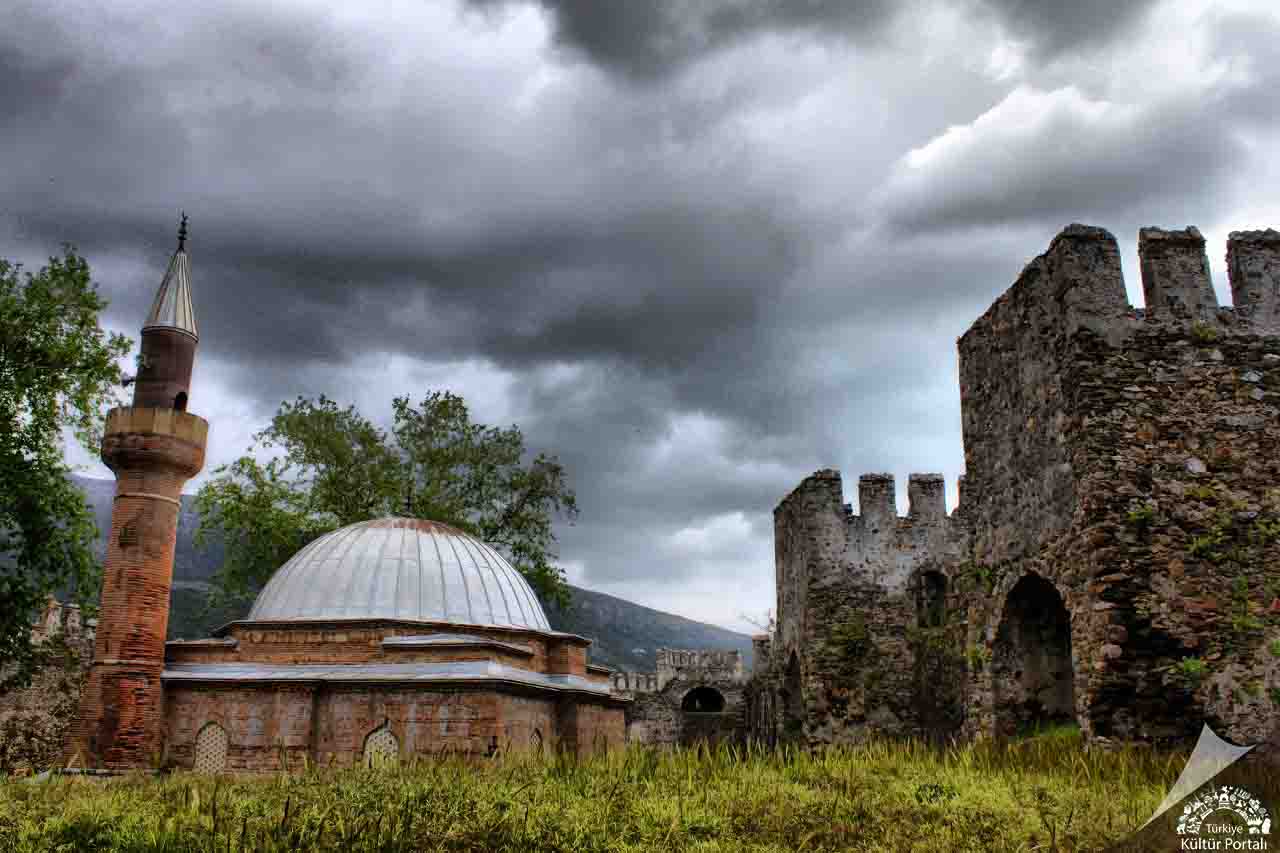It is one of the Turkish castles on the Mediterranean coastline that has survived to the present day. Mamure Castle, built on high rocks and plains, was built on ancient foundations like many Anatolian castles.
.jpg)
Photo: Official Turkish Museums
It has not been determined exactly when and by whom the ancient foundations, made of large cut stones, were built. The castle consists of three parts: the inner courtyard in the east, separated by high walls, the outer castle in the west, and the inner castle built on the rocks to the south.
.jpg)
Photo: Official Turkish Museums
The castle, which has 39 towers, water cisterns, a mosque and a bath outside, is surrounded by a 10-meter wide defensive moat. The lower parts of the castle walls are wide. The upper parts narrow towards the top. Various stones and Khorasan mortar were used when building walls and bastions. Cut stone was used in the arches of the entrance doors and some windows and in the corners of the walls. Brick was used in repairs and additions made in later periods. There are galleries connected to each other within the double-storey castle walls.
.jpg)
Photo: Official Turkish Museums
The towers and viewing areas on the upper floor can be reached by stairs. Starting from the thick and high watchtower called the main castle on the coast to the south of the castle, there is the main castle in circular and rectangular forms and the Lighthouse Tower, whose top has been completely destroyed, next to the corner bastion. In the outer castle, there is a centrally planned, single-domed mosque and its fountain, warehouses, cisterns and buildings that are likely to be residences for soldiers. Some publications mention the tomb of Hüseyin Gazi inside the castle. The first construction of the mosque, which carries the classical elements of the 16th century Ottoman architecture, belongs to the Karamanoğulları Period.
.jpg)
Photo: Official Turkish Museums
The entrance used today is not the main entrance of the castle. The main entrance gate is located in the north of the inner courtyard, between two towers with a rectangular plan. It has a six-line inscription on it. In summary, the inscription reads: "Karamanoğlu Alaaddinoğlu Mehmet's son Sultan İbrahim built it. Mamure Town and its castle are the corners of aid for the war. The protected settlement was completed with his help for jihad as a gift in the way of Allah. Thank you for the alertness that Allah has given us from His blessings and for showing us the right path. This history was written in the month of Muharram Shawwal in 854.” It is said. The bridge connecting the entrance gate to the outside and providing access to the castle from the moat does not exist today.

Ahmet Gullu
The water needs of the castle are provided by the waterway located at the bastion in the north-east of the main entrance gate and provided with two pointed arches over the moat. In case the castle was besieged, the water need was met from cisterns located in different parts of the castle. It is estimated that there was a Roman settlement in the castle and its surroundings, which is thought to be of little importance, in the 3rd and 4th centuries AD. There are ruins of a bath in the north of the castle. As a result of the rescue excavations carried out by the Anamur Museum Directorate in 1988; It was built of rubble stone, with Khorasan mortar in between, with mosaic-paved floors, and spaces thought to be baths and residences were unearthed. These ruins are thought to belong to the Ancient City of Rigmonai. During the rescue excavation, abundant ceramic pieces from the Late Roman Period were found.
%20(2).jpg)
Ahmet Gullu
After Anamur and Taşeli were occupied and destroyed by Christians, Karamanoğlu Mahmut Bey (1300-1308) defeated the enemy with his army, captured the castle, demolished the churches and built a mosque in their place, and prospered the castle and named it Mamuriye. There are documents indicating that the castle was later repaired in the mid-16th century and at the end of the 18th century and new additions were made to the castle. Finally, it was repaired by the General Directorate of Foundations in the 1960s. The craftsmanship and construction technique of the castle reminds us of Alanya Castle.
Source: Mersin Provincial Directorate of Culture and Tourism
⚜️ https://www.kulturportali.gov.tr/turkiye/mersin/gezilecekyer/mamure-kalesi